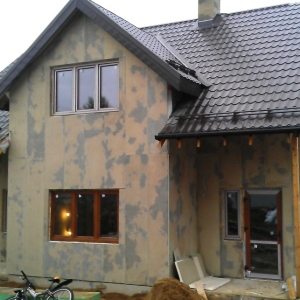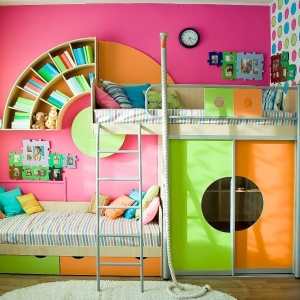One of the most sought-after and affordable thermal insulation materials used in construction for the insulation of buildings is the foam. This is a universal material that has moisture-resistant, low specific weight, perfectly retains heat and has a low cost. During the repair, there is a major question than to glue the foam to the surface so that it continues its main function as longer.
Dry glue compositions
The key to the effective thermal insulation and durability of the design of the foam, is its dense and reliable adjacent to the surface. For facade heat-insulating works, where foam is used, adhesive powdered mixtures are most often used, which includes cement, sand, polymer fillers. For example, facade glue for foam of T-Avangard, Ceresite ST-83 has a high degree of adhesion, they are used to glue foam plates with concrete, brick, cement surfaces. It should be noted that the facade adhesive mixtures have two varieties:
- for work in the winter - adhesive composition is suitable for work in frost;
- for summer work - applied at temperatures up to 35 degrees.
For the preparation of glue, dry powder is bred with water, guided by the instructions on the package. After drying, the adhesive mixture quickly hardens and form a reliable fixation of the foam plate to any surface.
To work indoors, mixtures on a plaster basis are used.

Glue - foam in cylinders
The most convenient option for gluing foam to the surface is the finished glue in the form of foam in a cylinder or aerosol mixtures. Adhesive foam has excellent characteristics: rapidly grasp to any surface, low consumption, increased moisture resistance, wear resistance, ease of use.
The glue is applied on the plates of foam directly before work. Through foam for half an hour, providing strong fixation of foam plates. The only drawback of the finished glue in the cylinder is a high price.
It is also worth observing special care when working with foam, as its skin hit, and especially on the eyes, may have negative consequences. Working with a cylinder foam is needed in gloves and protective glasses. Among the popular ready-made adhesives in the cylinders can be highlighted: - Titan Styro 753, Penosil, Ceresit Art 84 Express.

Other fixing agents for foam
For fixing small foam elements or for gluing thin plates to a smooth and clean surface, silicone sealants can be used.
For fastening foam with a metal surface, a "liquid nails" adhesive will be perfect option, such as installation moment. To improve the grasp of glue with metal, before work it is necessary to clean the surface, removing the rust layer, old paint and other contaminants. This bonding option is also convenient to use to work on the ceiling.

How to choose glue for foam - Recommendations
- Choose dry adhesive mixtures of well-known, trading brands, which earned their impeccable market reputation. Cheap glue of little-known manufacturers may not justify your hopes for durability and the effectiveness of gluing foam design.
- Pay attention to the suitability of glue.
- For insulation of outdoor walls of the house or balcony, choose only those glue compositions that are intended for facade works, given their temperature regime. It should be remembered that in working with facade glue is unacceptable use of solvents with solvents, which can lead to rapid destruction of foam plates.
- For interior decoration of walls by foam plates, use those glue mixes or finished glue, where the packaging indicates the marking of an environmentally friendly product.

According to the experienced builders, the foam is one of the easiest and most pleasant materials in the work, which does not require in-depth knowledge and special skills. To glue foam plastic to any surface, a minimal set of tools and a properly selected adhesive composition for the reliability and durability of the heat insulating structure.































